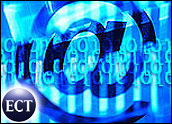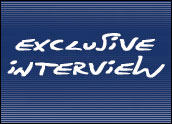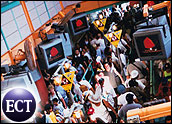
Phishing as a way of pilfering private consumer information has become a major security concern. What started as fraudulent e-mail requesting personal information has morphed into sophisticated phony eBay transactions and fake online bill-pay opportunities.
Consumer fears, combined with the sometimes-involved process of automating electronic bill payment through a legitimate bank Web site, have opened a door for firms such as Striata North America, an e-billing vendor headquartered in New York. The firms claim that e-billing — the transmission of creditor statements as e-mail attachments — solves security problems and simplifies registration for online bill presentment and payment.
Safer and Easier
“Phishing is me sending you a link to Citibank information, and you go to that Web site and give me personal information and it isn’t Citibank,” said Barrie Arnold, strategic adviser to Striata.
“E-mail really bridges the gap between expensive paper billing and the inconvenience of online billing, which requires customers to click a link and visit a Web site to view their bills,” he said. Customers with slow dial-up Internet connections can take part in this wave of innovation, as can those who feel comfortable with e-mail but not with other functions available through their desktop PCs.
Statements, Arnold explained, are delivered as e-mail attachments. Wary consumers can print them out and mail them with paper checks if they please, or they can pay them online after entering the same user name and password that accesses their checking accounts.
Arnold claims that billers can save US$3.5 million to $4 million per year moving their statements to an electronic-only format.
Consolidated Edison, the energy conglomerate in the Northeast United States, achieved penetration of less than 1 percent with online billing and more than 15 percent with e-billing, Arnold reported. “Companies are never going achieve 100 percent e-billing adoption,” Striata’s Arnold said. “But for every additional customer that signs up, they will be making considerable savings, especially with postage going up to 42 cents in June.”
Statement Promotions
If those savings aren’t attractive enough, Arnold also calls attention to marketing opportunities.
E-billing offers creditors the opportunity to send customized sales messages to recipients cost-effectively. Even messages sent to large segments of a utility company’s database, for instance, can appear personalized for the recipient.
“Companies are able to use business rules to personalize every aspect of their communication,” he said. “This includes highly targeted offers, rather than generic bill stuffers that no one ever reads.
“Companies can also conduct surveys [and] send out newsletters or service-change notifications,” he added.
Consumer Distrust
But there are doubters. Jean Ann Fox, director of consumer affairs for the Consumer Federation of America in Washington, D.C., told CRM Buyer that consumers won’t necessarily trust e-mailed bills any more than they trust the more familiar online kind.
“People are so worried about spam,” she said. “How do e-billers guarantee that the e-mail isn’t filtered out by the consumer’s e-mail provider?
“I know the U.S. Postal Service isn’t foolproof,” she continued. But consumer perception if not actual fact today lends less credibility to e-mailed communications than to snail-mailed ones. And U.S. consumers have no experience with e-mailed bills.
“Everything else being equal, you have to have some basic consumer confidence before you can apply a widespread technology to a new purpose like e-billing,” she said. Right now, consumers have no reason to think that e-billing is more secure than online billing through creditor or bank Web sites. E-bills are not as reliable as paper statements for the simple reason that consumers aren’t familiar with them.












































Social CRM
See all Social CRM